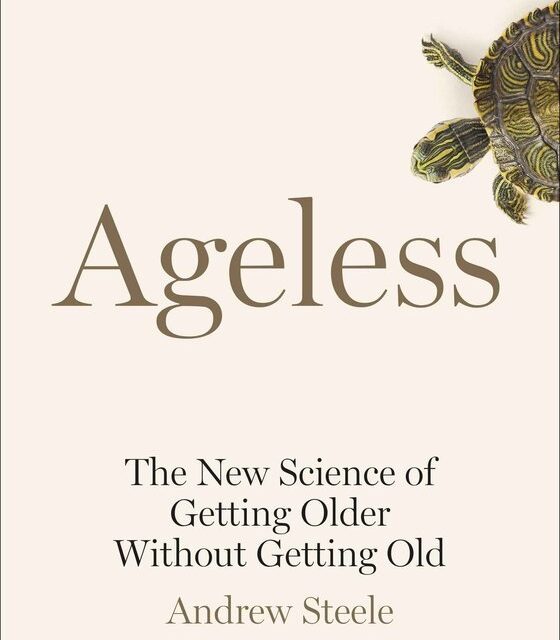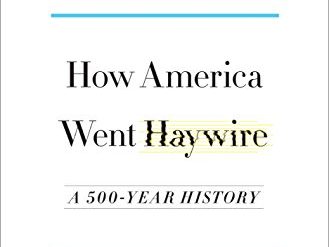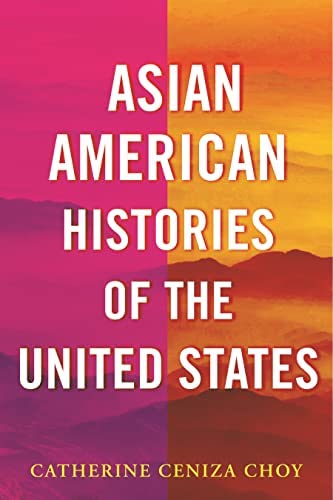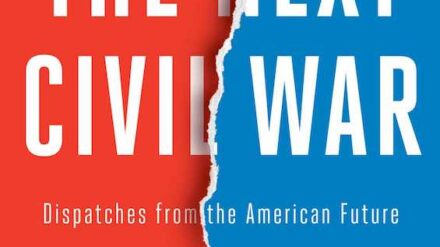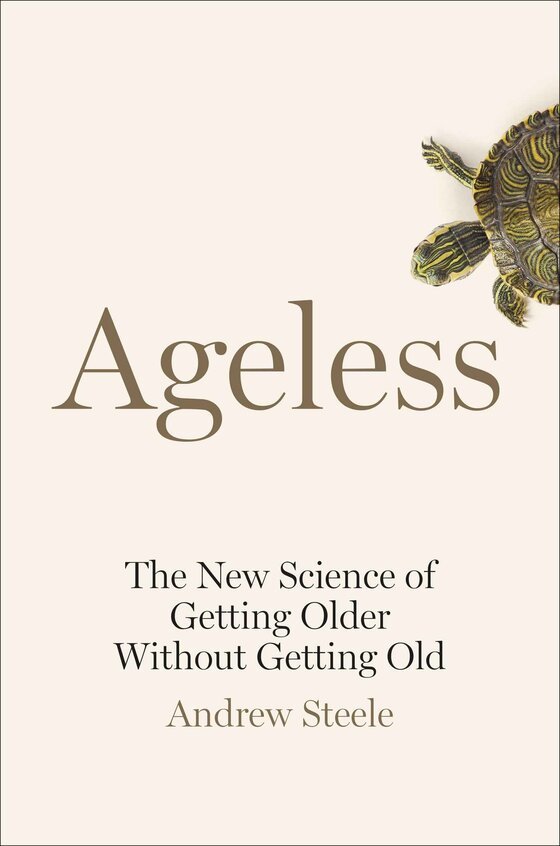
If you’re considering this book in hopes of finding some magical supplement or salve to add ten years to your life, forget it. The author is a PhD physicist turned computational biologist—a serious scientist. In Ageless, he relates the latest findings about the emergence of a new field called biogerontology. The word is a mouthful, but its meaning is transparent: it’s the study of the biological basis of aging and age-related diseases. And the author, Dr. Andrew Steele, contends that advances in the field hold out hope that in the foreseeable future a combination of drugs and genetic engineering can extend both the human lifespan and our healthspan.
Estimated reading time: 7 minutes
In other words, as the subtitle of Steele’s book suggests, we are on the cusp of learning how to get older “without getting old”—staying healthy and active to the end. For me at age eighty, that’s a mighty attractive proposition. It’s hard to resist the prospect of living longer, so long as I’m not bedridden or witless during the additional years.
A paradigm shift in the science of aging
Steele argues that scientists are now beginning to address the phenomenon of aging itself rather than just the signature diseases and infirmities that are associated with it. It’s a paradigm shift, and if the scientists he promotes in this book receive the funding they need to move ahead aggressively, their efforts might make it possible for today’s average global lifespan of 72.6 years—already nearly 10 years higher in the world’s richest countries—to extend to 100 by the end of the century. Not by curing cancer or heart disease, or squelching every pandemic disease to come down the pike, but by manipulating the mechanisms that determine our biological age.
For example, the author asserts, “rather than going after hundreds of types of cancer and finding bespoke treatments for each, we could try to deal with the DNA damage which underlies them all, the senescent cells and chronic inflammation which aggravate them all and the faltering immune defenses which they must all slip past, and reduce the odds of getting cancer in the first place.” He adds much later, “given how far we’ve come in the last 50 years, it would be foolish to bet that the kind of systems biology we’d need to cure aging won’t be possible in the next 50.” Living longer, he suggests, is in our future.
Ageless: The New Science of Getting Older Without Getting Old by Andrew Steele (2021) 321 pages ★★★☆☆
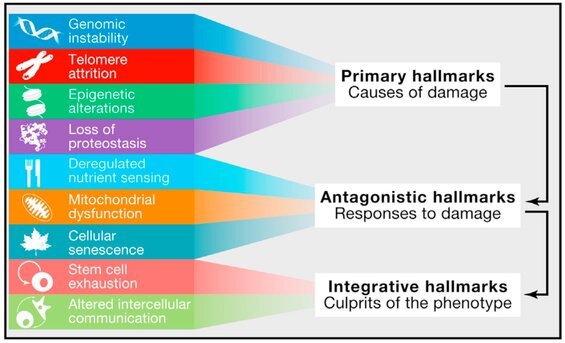
Complex science made simple. Sort of. Sometimes.
For the average person, the science of aging is unfathomably complex. Steele makes it easy to understand—up to a point—but only so long as you have rudimentary knowledge of biology. As the son and brother of doctors, and the husband of a biologist, I’ve picked up a little of that. But I still found myself alternately befuddled or feeling my eyes glaze over as I read Steele’s detailed accounts of how some particular drug or gene acted to extend or truncate the life of mice in laboratory studies. Nonetheless, I found Ageless to be illuminating.
“What’s astounding,” Steele writes, “is that the doubling of human life expectancy since the start of the 1800s has been achieved without any treatments for aging. We’ve scored some indirect hits—improved diets, exercise, cutting out smoking, and preventative medicines to reduce cholesterol or blood pressure all arguably slow parts of the aging process to some extent—but there’s not a single drug or treatment available in your local pharmacy or hospital expressly designed to slow or reverse aging.” Yet, there is every prospect that that will change in the years ahead. Continuing advances in biomedicine will make living longer likely.
Living longer through science
Steele makes clear that “aging isn’t one single thing—but nor is it thousands. We now known enough to attempt to place aging-related changes into categories. Most excitingly, there are few enough that we can hope not only to explain what drives the aging process, but potentially come up with treatments to address it.” Other scientists have proposed grouping those changes into seven or nine categories. Steele describes ten “hallmarks” of the aging process, because “given that aging is a multifaceted process, treating it is going to require a portfolio approach.” As a result, “there may well be dozens of treatments in our eventual repertoire.”
- DNA damage and mutations
- Trimmed telomeres
- Autophagy, amyloids, and adducts
- Epigenetic alterations
- Accumulation of senescent cells
- Malfunctioning mitochondria
- Signal failure
- Changes in the microbiome
- Cellular exhaustion
- Malfunction of the immune system
If you understand all the language in this ten-item typology, you’re way ahead of me. Individually, Steele makes each of these terms (more or less) understandable in Ageless. But the experiments he describes to explore how to counter them, and the treatments he proposes, are much harder to grasp. Suffice it to say that the science seems credible. In other words, I’ll take his word for it.
Keep in mind that this is not science fiction. Steele reports on human trials underway on drugs developed to counter several of the items in his list. Subjects, both lab animals and, in a few cases, people, are already living longer as a result. And other scientists are deploying gene therapy, especially now with the benefit of CRISPR-Cas9, to address others.
Three parts to the book
Ageless consists of three parts. In Part 1, Steele describes “An Age-Old Problem,” noting the marked increase in life expectancy we’ve experienced in recent centuries. Part II, based on the typology above, is about “Treating Aging.” In Part 3, he advances his prescription for “Living Longer.” And that last part is the most disappointing. I surely don’t need to be told again not to smoke, drink to excess, overeat, or fail to exercise. He mentions the promise inherent in “probiotics, prebiotics and synbiotics,” all of which are available in certain foods and food supplements. However, he cautions against the use of food supplements in general, many of which he insists cause more harm than good, while the others are of no use at all. Given what I’ve learned from doctors and nutritionists, I believe he does too far with that claim. And vitamin manufacturers will not be happy.
Although Steele is more informative than I’m suggesting here, “Living Longer” was less rewarding for me. It is, in part, an activist’s plea for the governments of rich nations to fund anti-aging research. “Aging causes 85 percent of deaths in the U.S., but receives 6 percent of health research funding,” he notes. But I’m not the right audience for that message.
About the author
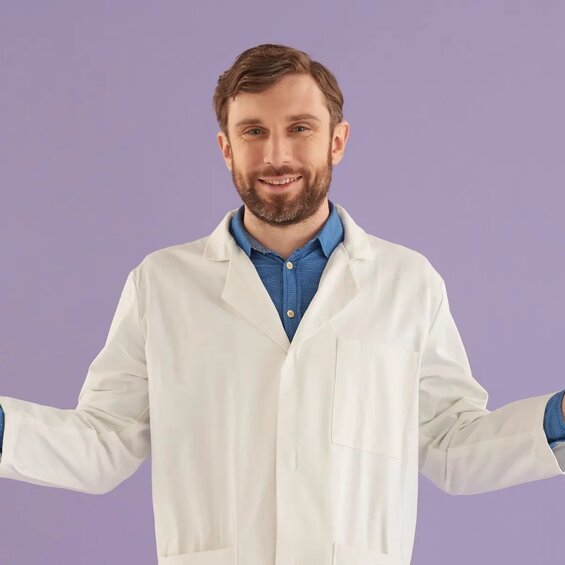
Andrew Steele‘s bio on Amazon reads in part: “Dr Andrew Steele is a scientist, writer and campaigner [British for “activist”] based in London. After a PhD in physics from the University of Oxford, Andrew decided that ageing was the single most important scientific challenge of our time, and switched fields to computational biology. He worked at the Francis Crick Institute, using machine learning to decode our DNA and predict heart attacks using patients’ NHS medical records. He is now a full-time science writer and presenter.”
For related reading
I’ve read and reviewed a number of several excellent books about medical science. Among them are:
- Being Mortal: Medicine and What Matters in the End by Atul Gawande (How to deal with death and dying)
- The Emperor of All Maladies: A History of Cancer by Siddhartha Mukherjee (A cancer researcher looks at the disease most of us fear above all)
- The Immortal Life of Henrietta Lacks by Rebecca Skloot (The dark side of medical history)
You might also be interested in Science explained in 10 excellent popular books
And you can always find my most popular reviews, and the most recent ones, plus a guide to this whole site, on the Home Page.

